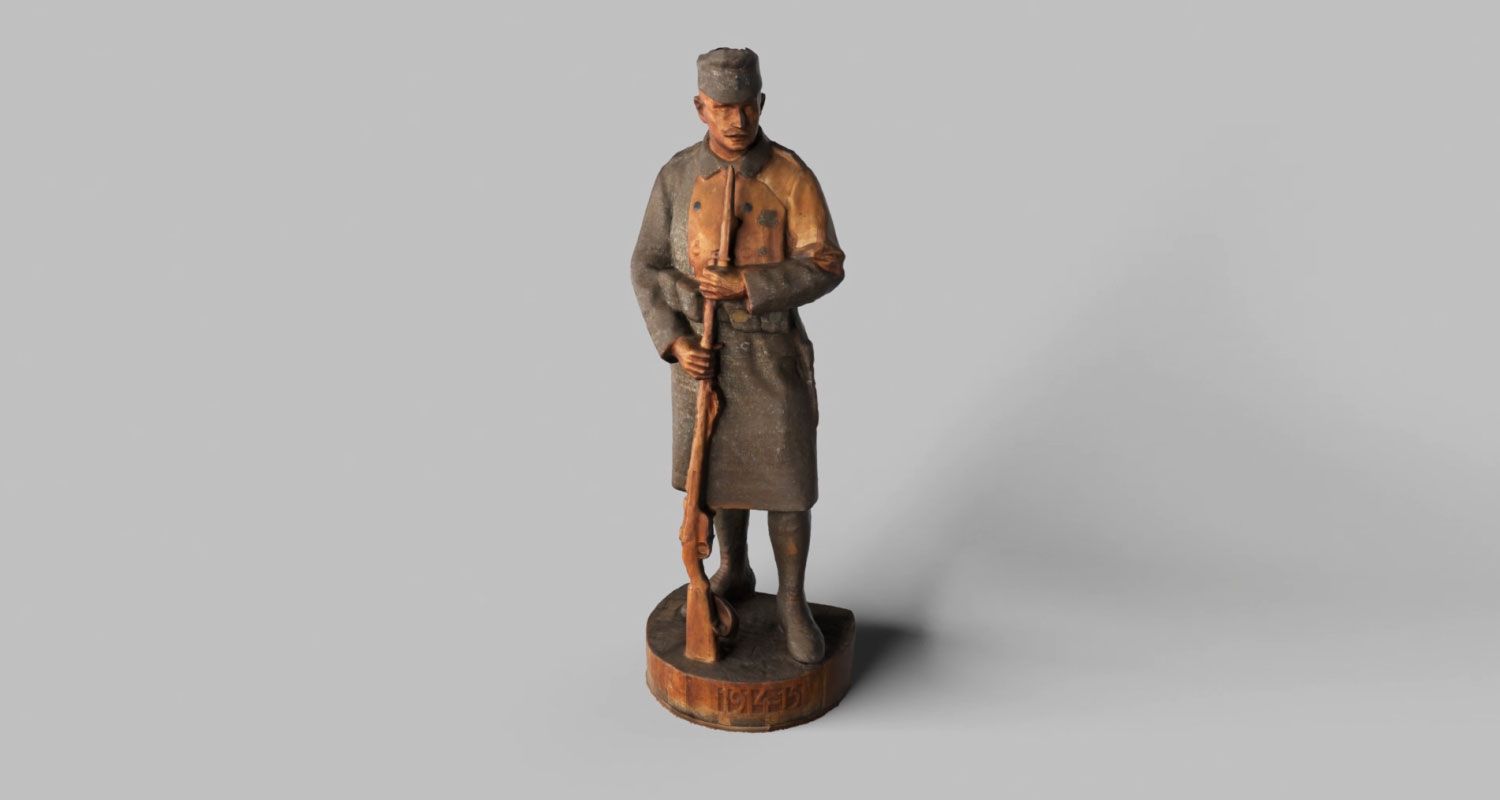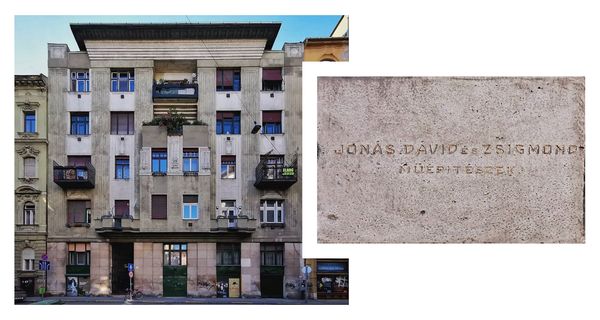An exhibition always gives a lasting experience, as we can finally see the artworks and relics in the real space that we could only browse in albums before. Can an online exhibition give the same impression? With what technologies can we create a realistic effect in virtuality? We interviewed Döme Vereczkei, Head of Production at Play Dead Studio about these issues in relation to the digitization of the exhibition of the Skanzen titled Amikor minden más lett (When everything changed…) opening this week.
Your last project was the digitization of a very complex exhibition of the Skanzen on the Trianon anniversary. If I know it correctly, the lockdown was imposed just around the day of opening, this is why you needed to move the exhibition to the online space. What was your job exactly?
Yes, we were already in the process of delivering the built elements of the exhibition when everything ground to a halt. The idea of moving the exhibition online was kind of self-evident. Both our and the Skanzen’s team have put a lot of work into the exhibition, so we didn’t want our efforts to go to waste. When the state of emergency was declared, we didn’t know how long the epidemic would last, so our idea was that if people were going to be stuck at home for months, at least they would be able to see the exhibition virtually.
Each and every object, picture and relic exhibited can be viewed and visited virtually. How many objects did you have to digitize in total? What techniques and software did you use?
We had to process more than 300 objects and 200 photographs and scanned documents for the exhibition. In most cases, we created 3D models of the objects in Cinema4D based on reference photos and measurements. However, there were also objects we could create complete photo series of thanks to the help of the Skanzen and based on these, using a photogrammetric software we managed to generate almost lifelike models. Of these I would like to highlight the virtual version of István Szentgyörgyi’s „Fahonvéd”, which turned out to be impressively rich in detail, and which would have been extremely difficult to reproduce without the photos. As to the actual photos and digitized documents, these were prepared for use in Photoshop, before they were added to the 3D space.
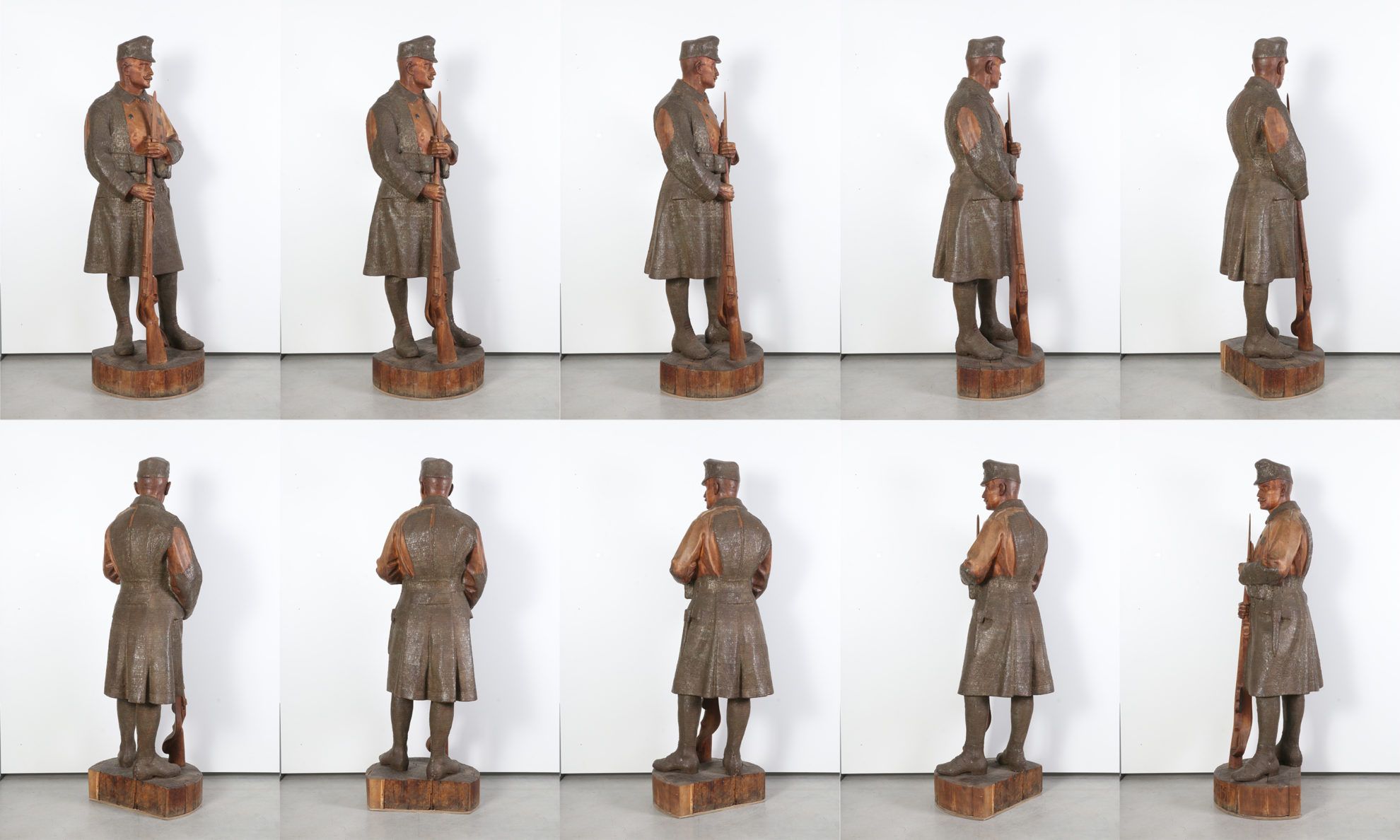

Obviously it’s completely different to be present in the real space than to see an exhibition virtually. How is and was it possible to make the virtual version as close to reality as possible?
Of course the goal for the online version of the exhibition was to emulate reality as closely as possible. It was a good starting point that the designs for the original exhibition were created in 3D anyway and to be able to create the layout of the exhibition, we also did a thorough survey of the entire exhibition space, so its model was also ready at hand. Therefore we had an opportunity to build a virtual version of the exhibit, almost identical to the original. However, only because something is technically feasible does not necessarily mean that its potential can be exploited. If you asked someone on the street what makes an experience of this kind authentic and realistic, they would probably say being able to walk anywhere in the space, being able to view any object, text or interactive content from any angle the same way they would do so in reality. And they would be completely right. In contrast, however, even though we are able to build such a virtual space, not only is this a very time consuming task, but also the computer and internet connection of today’s average user are not suitable yet for displaying this kind of content. Partly for this reason, and partly because we unfortunately didn’t have sufficient reference material for every item, we had to rationalize and limit where users could move when implementing the online version. This is why we decided to stitch together the exhibition using 360 degree panorama renders. This way, visitors can only walk through the space from one panorama render to another along pre-determined routes. This, by the way, has its advantages too: this way, it becomes possible to guide visitors through the exhibition consciously and it also becomes more transparent for the user how the various sections are connected to each other.
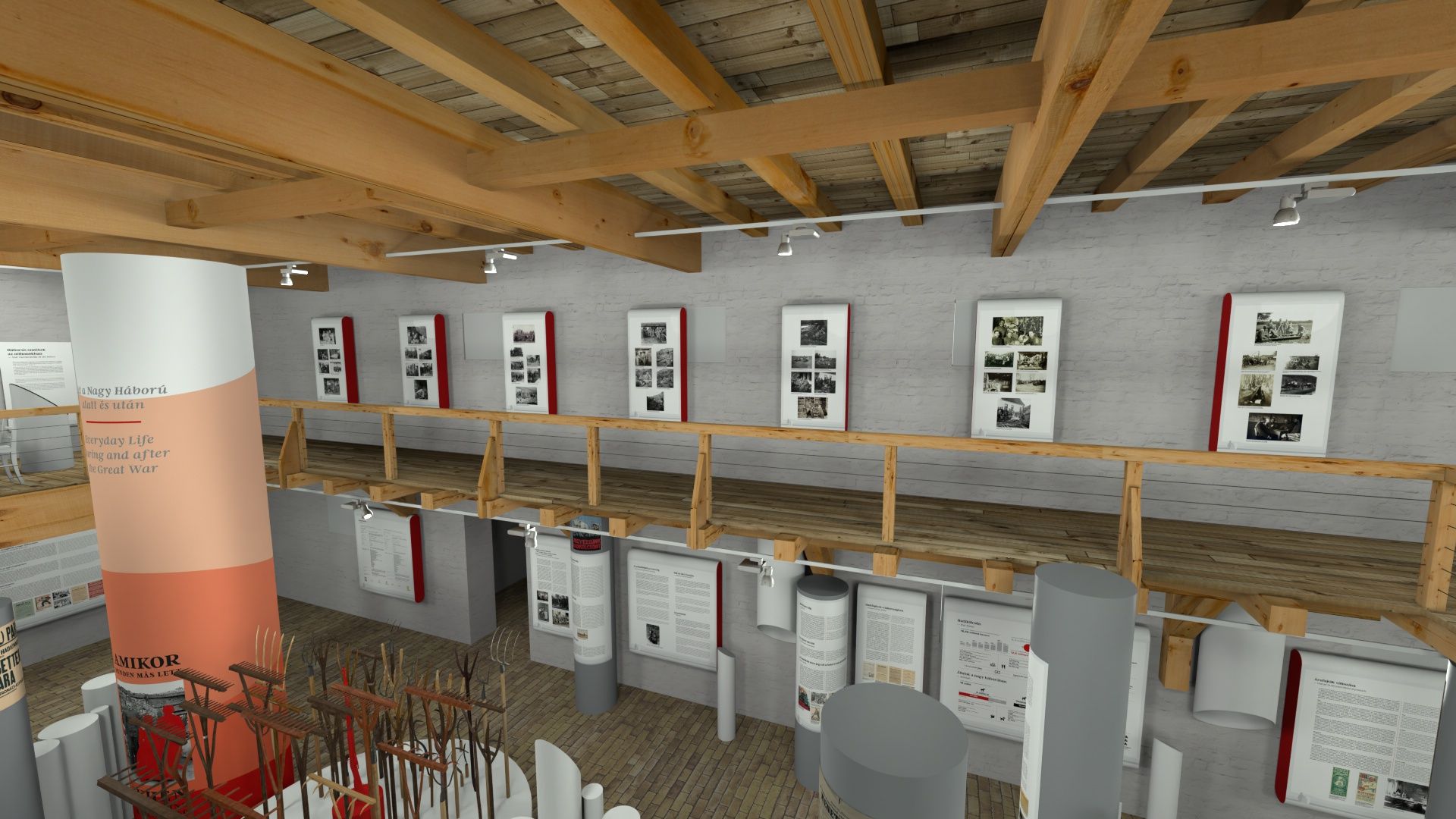
We are talking about a multi-level, summary exhibition, with plenty of work in it. How much time did you have for digitization? How many people worked on it, and how was the work divided? To what extent was work flow challenged by having to work from home?
We had around eight weeks to complete the project. I would like to add that part of the data had already been processed previously, during the preparation of the built exhibition, so we could start the work right away, and we didn’t have to spend time cataloguing the objects in the exhibition. We assign every object and photo in the exhibition a unique ID and in addition to this tag them with all kinds of information, starting from size, through inventory numbers, to related descriptions, which are all very useful during the various work phases. If we don’t have these data at hand, it would be practically impossible to work. For example, if we don’t know the dimensions of an object, we cannot model it properly, and we can’t determine the size of the display cabinet we must design for it either.
Speaking of design, our lead architect Balázs Rajcsányi and architect Péter Debreczeni designed the exhibition space itself and the mass models in 3DS MAX and Rhino3D, which were then mapped and filled with the previously mentioned 3D objects by graphic designer Balázs Körmendi. Our entire team took part in making the latter. In addition to the objects, many photos and a lot of textual content are on display in the exhibition, the design of which along with the visual identity of the entire ehxibition is the work of András Berecz. The contents he created were made in InDesign. These were then converted so they would work in the virtual space. We have also created several interactive elements and smaller animations under the supervision of our lead graphic designer, Pál Varsányi, the elements of which were mostly prepared in After Effects. These elements together with the entire virtual exhibition were brought to life by our programmer partner, Ferenc Szabó.
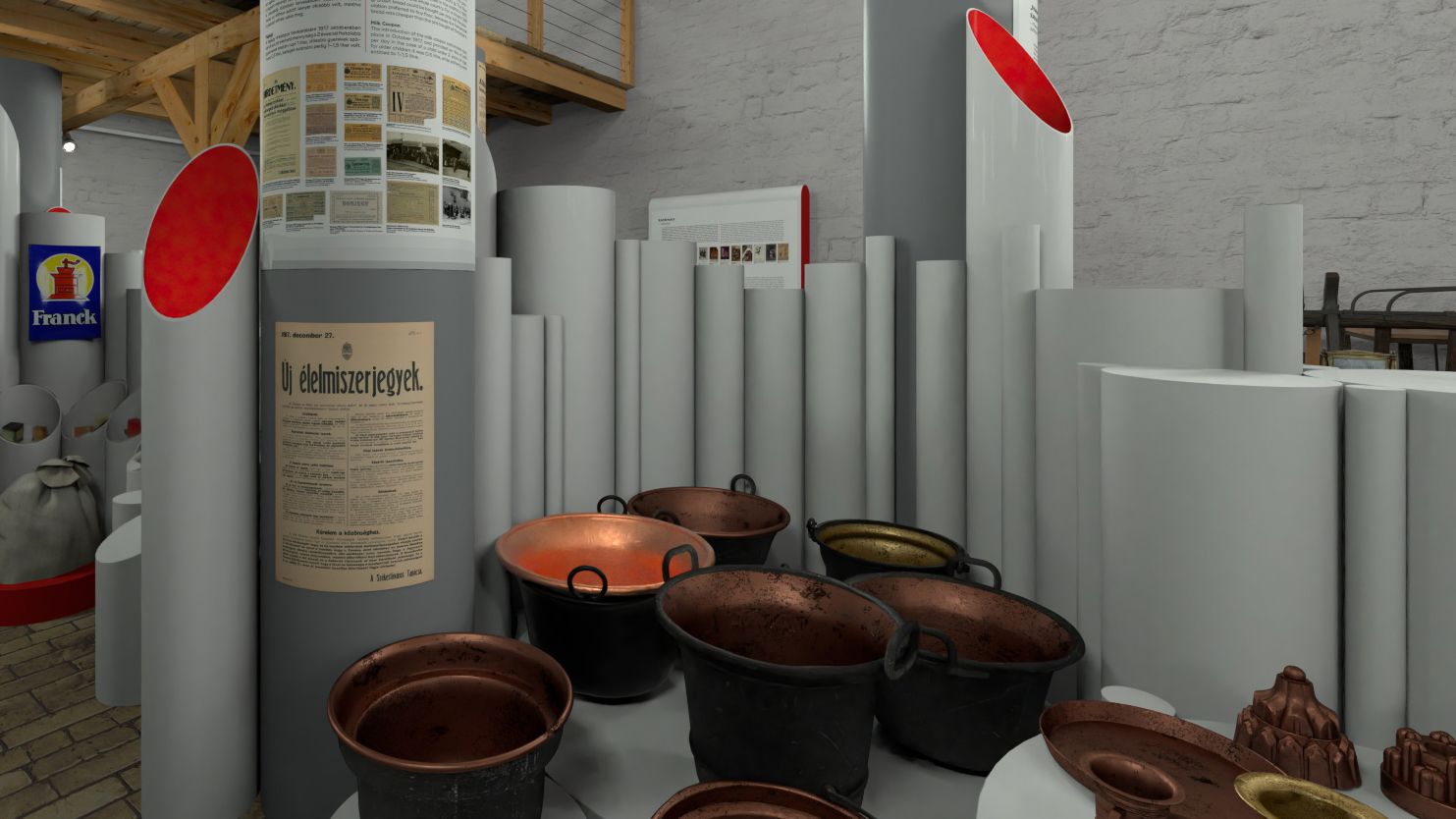
As you can see from this little summary, we had to tackle quite a variety of tasks in the past few weeks. Not only that, but we had to do so, while everyone had to work simultaneously, even though the subtasks were all interdependent. This process was, of course, not facilitated by having to work remotely. I think compared to the average, our team are proficient at using software needed for working from home, as they play an important role in our normal workflow, but they cannot replace working together in the office. While on an average office working day, we can discuss a piece of client feedback while I show my colleagues on their screens what they have to modify, in a home office scenario, this means several rounds of phone calls, e-mails and Zoom video calls. Not to mention that at the beginning of the epidemic, internet usage increased so much everywhere that sometimes communication was problematic owing to service disruptions. In brief, remote working can be implemented without any problems, but it’s not at all as effective as we would like it to be.
Probably the workers of the museum and the curators also had ideas about the move to the online space. What was the work together like?
Our cooperation was quite harmonious, which is probably owed to the fact that both we and the curators of the Skanzen – Szilvia Tömöri, Tamás Kloska and Zsolt Sári – saw the unprecedented situation caused by the epidemic as an opportunity to create something progressive and modern. As to the ideas about the virtual exhibition, apart from the technical details, we didn’t have to discuss much regarding the directions. Our aim was simply for visitors to receive the same experience in terms of content as if they had visited the real exhibition. So to achieve this, it was logical to adapt everything from the already envisioned concept and use it in the virtual version.
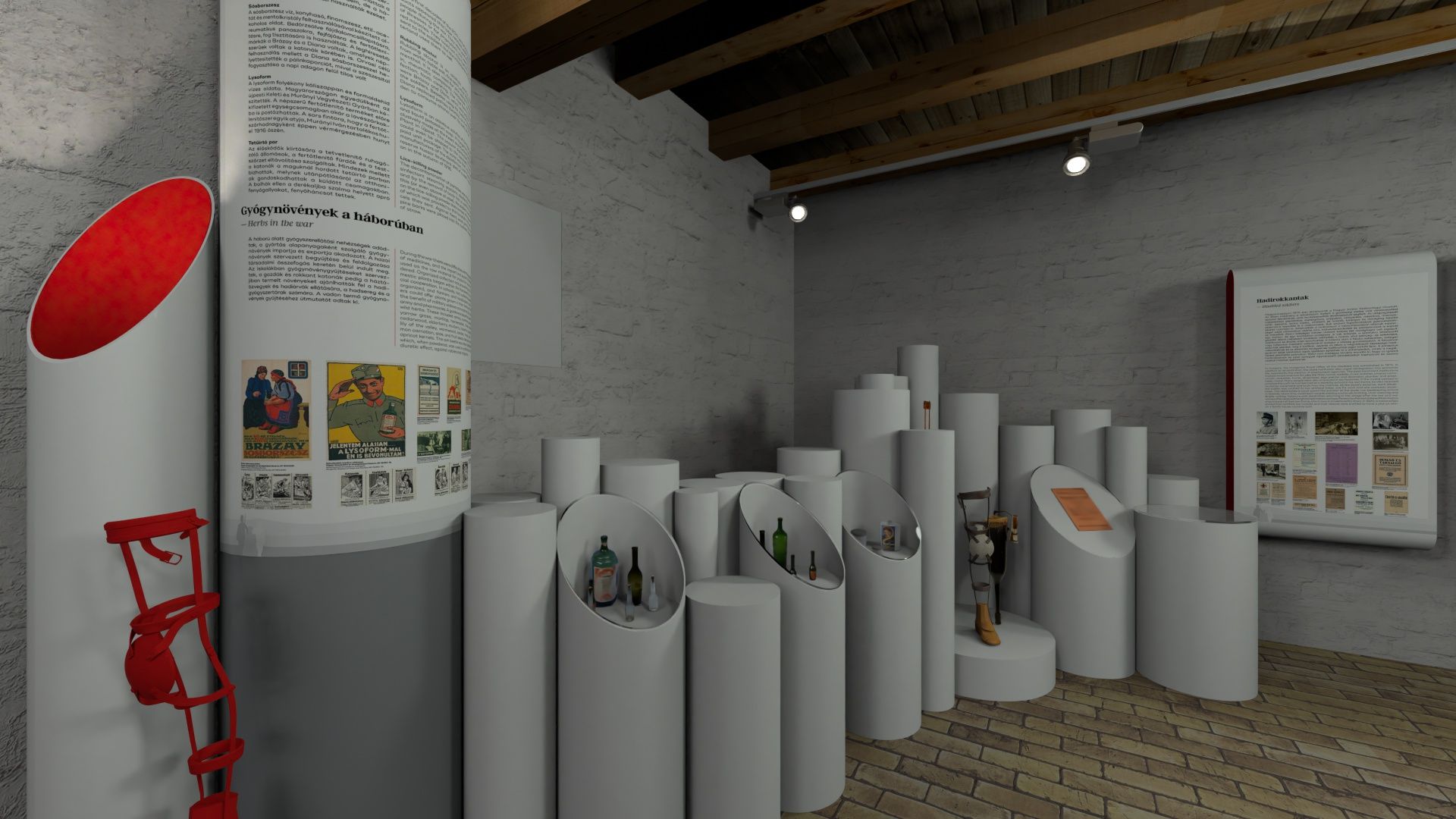
From now on, having experienced the situation caused by Covid-19, probably all museums and exhibition spaces will attempt to prepare for online presence, too. Exhibitions available from home practically anytime, in a much better, enjoyable quality. What benefits do online exhibitions offer in your opinion? Can two worlds of exhibition, the real and the virtual coexist? What trends do you expect in this respect?
I think both real and virtual exhibitions have their raison d’être, because they offer completely different experiences. Obviously, walking into the Vatican and seeing historical memorabilia that have been there for hundreds of years is an experience of a lifetime. The world has changed a lot though in recent years. Even compared to fifteen or twenty years ago, there are much greater numbers of tourists flooding the larger museums of the world, making some exhibitions not only unenjoyable but straight-out depressing. If I go abroad, I set out for the museums I want to visit as early as possible, so mostly there is literally nobody around, but an hour after opening there are so many people standing in line that I wouldn’t even want to go in. In contrast, you can view a virtual exhibition in peace without wanting to leave due to a crowd, or without having to rush out of a building worrying about the closing time, even though you only saw half of the exhibition, or had no time to read the descriptions in detail. Another advantage of a virtual exhibition is that it has no physical boundaries. For instance, despite the fact that the Hermitage has a collection which consists of more than 3 million artworks, they only get to exhibit a fraction of it, even though it’s one of the largest museums in the world. There is no such problem online. A museum, provided that it has the necessary financial means and demand for it, can digitize its entire collection. This is fantastic for museologists, as it allows them to research items they would never have access to otherwise, from the comfort of their homes. I also see great potential in the digitization of exhibitions from the perspective of education. Just imagine a history class, where instead of giving a two-page description to students about something abstract, the teacher brings their entire class to any museum in the world with only two clicks of a mouse, and shows them what they are talking about. I am positive that children would be much more engaged by this approach and it would also make the curriculum more comprehensible. I feel that perhaps exactly for this reason, museums will lay more emphasis on developments of this kind in the future. In the same way a journal offers access to premium content in exchange for a subscription fee or via membership of certain institutions, museums could join a platform to which not everyone would have free access. The free access of educational institutions, for example, could be covered by the payments of other visitors.
The virtual exhibition of the Skanzen will go public within days, which means that this enormous work will also end soon. Would you start it all over again? What plans do you have for the future? What is the team of Play Dead working on at the moment?
In spite of the huge amount of work that went into it, realizing this project was very enjoyable, as we had to accomplish something the likes of which I have not really seen elsewhere. Personally, I would like to do similar virtual exhibitions in the future – during the project, we had many ideas that would have been worth exploring if we had more time. As to the future, we have several Hungarian and foreign projects currently in progress. We are mostly talking about TV sets and visual identities, which actually account for most our work. Unfortunately I cannot tell you any details yet, but they will be out soon.
You can view the virtual exhibition titled Amikor minden más lett by clicking on this URL.
Play Dead Studio | Vimeo

Feeling free, safe and loved at school | Sarit Shani Hay










